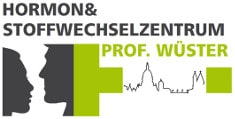New guideline: Specialist for Koblenz provides information on the pituitary gland
Patient information from the endocrinologist for Koblenz: Guideline on hormone-inactive tumors of the pituitary gland
A new S2K guideline on the diagnosis and treatment of patients with hormone-inactive tumours of the pituitary gland has now been published. Prof. Dr. med. Dr. h. c. Christian Wüster, who heads the Hormone and Metabolism Centre in Mainz and also treats patients from the Koblenz area there as a specialist, refers to this. The pituitary g land is an endocrine gland that controls other endocrine glands in the body via its messenger substances. A disease of the pituitary g land can therefore have far-reaching consequences for various bodily functions. Hormonal changes can occur as a result of a tumour on the pituitary gland. Too many or too few hormones can be produced. The disease is therefore accompanied by individual symptoms. These can include fatigue such as circulatory disorders, low blood pressure, fat metabolism disorders, freezing or muscle weakness.
Specialist endocrinologist in the Koblenz area: Pituitary gland adenomas are often incidental findings
In most cases, tumours of the pituitary gland are benign adenomas. However, the problem with this form of the disease is that the tumour can affect the surrounding tissue in the brain. The diagnosis is not always made because a tumour on the pituitary gland causes symptoms. Instead, more and more tumours on the pituitary gland are being discovered by chance. The background to this is the increasing number of incidental findings in imaging diagnostics, for example in connection with dizziness or headaches.
‘This makes it all the more important to have concrete guidelines to guide treating specialists. The recommendations now drawn up by the German Society of Endocrinology, other specialist societies and organisations for the diagnosis of hormone-inactive pituitary adenoma can provide this orientation. At the same time, it helps to prevent under- or overdiagnosis. Microadenomas, for example, that are not symptomatic should therefore not be treated, but only observed,’ explains Professor Wüster.
Second opinion on diseases of the pituitary gland from a specialist in the Koblenz region
At the Hormone and Metabolism Centre, Professor Wüster offers his patients in the Koblenz to Mainz catchment area a precise diagnosis by measuring the prolactin level in the blood. Imaging procedures are another element of diagnostics. The focus is always on an individualised treatment concept. The aim is to avoid surgery and initially get the pituitary gland disorders under control with medication. Prof Wüster: ‘The chance of successful treatment of pituitary diseases increases with early diagnosis. We are happy to provide patients from the Koblenz area with a second opinion.’

